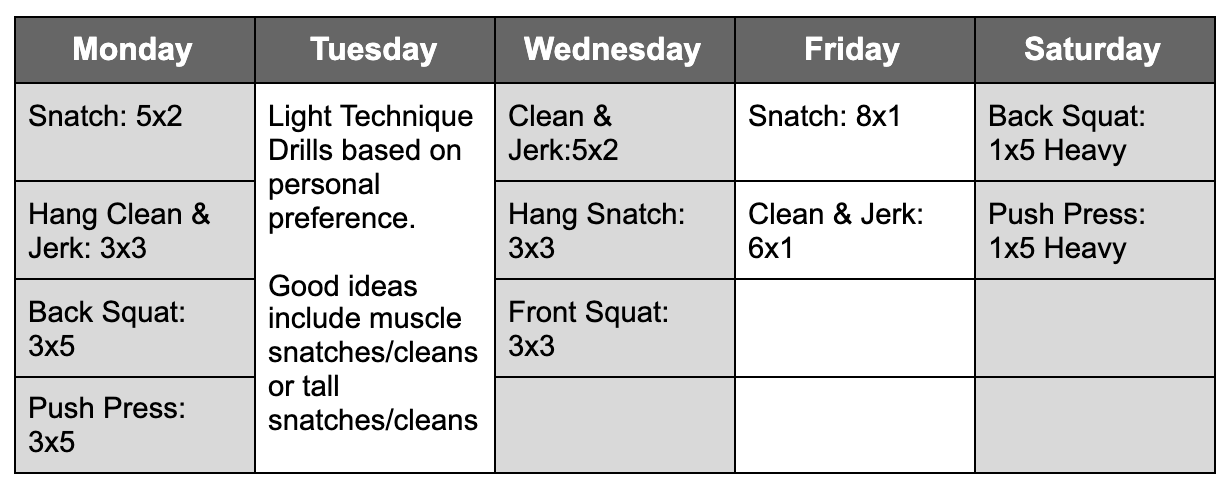Effective Weightlifting Program for building muscle and strength: Forget skinny jeans and hello superhero physique! This isn’t your grandpappy’s weightlifting routine; we’re diving headfirst into a world of progressive overload, perfectly sculpted gains, and enough iron to make a blacksmith blush. Prepare for a journey that will transform your body and, dare we say, your very soul (or at least your Instagram feed).
We’ll unravel the mysteries of muscle growth, explore the best exercises to sculpt your dream body, and arm you with the knowledge to conquer any weightlifting challenge. From understanding training splits to mastering proper form (no more wobbly squats!), we’ll cover everything you need to build a truly effective program tailored to your individual goals. Get ready to lift heavier, look better, and feel unstoppable!
Introduction to Effective Weightlifting
So, you want to sculpt yourself into a magnificent specimen of human strength and physique? Excellent choice! Weightlifting, when approached correctly, is a powerful tool for building muscle and increasing strength. Forget those flimsy resistance bands; we’re talking serious iron-pumping action here. This introduction will lay the groundwork for your journey to becoming a weightlifting warrior.Muscle growth, or hypertrophy, happens when your muscles are subjected to stress beyond their usual capacity.
This stress causes microscopic tears in the muscle fibers. Your body, being the incredibly efficient machine it is, then repairs these tears, making the fibers thicker and stronger. Strength gains, on the other hand, are a combination of this increased muscle mass and improved neural efficiency – your brain gets better at recruiting muscle fibers for a given task.
Think of it like this: you’re not just building bigger muscles, you’re also becoming a more skilled muscle-controller.
Progressive Overload
Progressive overload is the cornerstone of any successful weightlifting program. It simply means consistently increasing the demands placed on your muscles over time. This could involve gradually increasing the weight you lift, the number of repetitions you perform, or the number of sets. Without progressive overload, your muscles will plateau, and your gains will stall. Imagine trying to build a skyscraper with only one brick – you wouldn’t get very far! Similarly, if you keep lifting the same weight for months, your muscles won’t have a reason to grow.
A classic example of progressive overload is adding 2.5 pounds to your barbell bench press every week, as long as you maintain good form and can still complete the desired number of repetitions.
Training Splits
Choosing the right training split is crucial for optimizing your workouts and preventing overtraining. Different splits cater to various training styles and recovery abilities.
| Training Split | Description | Example |
|---|---|---|
| Upper/Lower | You train your upper body one day and your lower body the next. This allows for more frequent training of each muscle group, promoting better recovery. | Monday: Upper Body, Tuesday: Lower Body, Wednesday: Rest, Thursday: Upper Body, Friday: Lower Body, Saturday & Sunday: Rest |
| Push/Pull/Legs | This split divides exercises into pushing movements (chest, shoulders, triceps), pulling movements (back, biceps), and leg exercises. This allows for better muscle group isolation and targeted training. | Monday: Push, Tuesday: Pull, Wednesday: Legs, Thursday: Rest, Friday: Push, Saturday: Pull, Sunday: Legs |
| Full Body | You train all major muscle groups in a single workout. This is ideal for beginners or those with limited time. | Monday: Full Body, Tuesday: Rest, Wednesday: Full Body, Thursday: Rest, Friday: Full Body, Saturday & Sunday: Rest |
Remember, the best training split is the one you can consistently stick to. Don’t get bogged down in the complexities; find a routine that fits your lifestyle and allows you to progressively overload your muscles. Consistency is key!
Exercise Selection for Muscle Growth and Strength
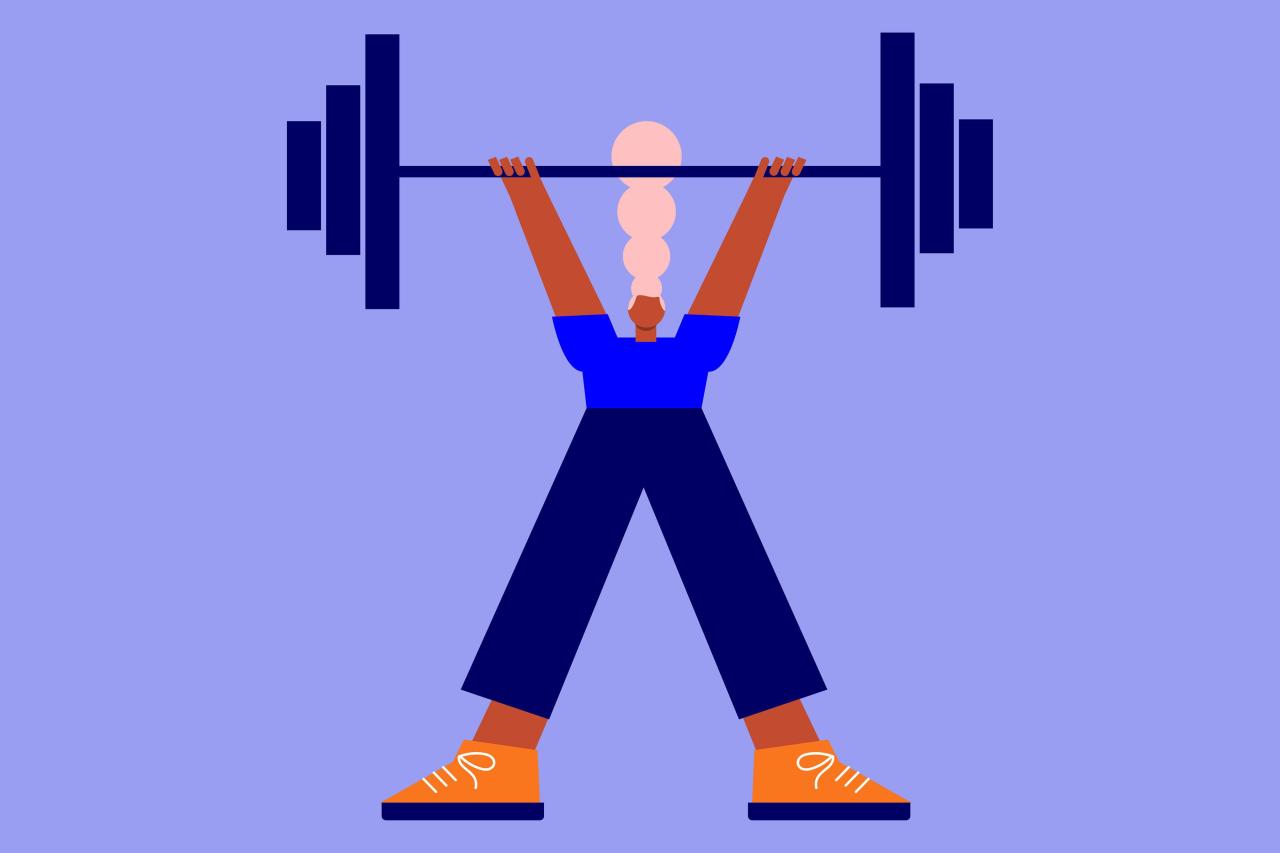
Choosing the right exercises is crucial for building muscle and strength. Think of it like this: you wouldn’t try to build a house with only hammers, would you? Similarly, a well-rounded weightlifting program needs a diverse selection of exercises targeting different muscle groups and utilizing various training techniques. Ignoring this fundamental principle is like trying to win a marathon by only sprinting – you’ll burn out fast and likely won’t reach your goal.
Sample Weightlifting Program
This program incorporates both compound (multi-joint) and isolation (single-joint) exercises for balanced muscle development. Remember to consult with a healthcare professional or certified trainer before starting any new workout routine. Proper form is paramount to prevent injuries and maximize results.
| Exercise | Muscle Group | Sets | Reps |
|---|---|---|---|
| Barbell Squats | Quads, Glutes, Hamstrings | 3 | 8-12 |
| Bench Press | Chest, Shoulders, Triceps | 3 | 8-12 |
| Deadlifts | Full Body (especially back, hamstrings, glutes) | 1 | 5 |
| Overhead Press | Shoulders, Triceps | 3 | 8-12 |
| Bent-Over Rows | Back, Biceps | 3 | 8-12 |
| Bicep Curls | Biceps | 3 | 10-15 |
| Triceps Extensions | Triceps | 3 | 10-15 |
| Leg Press | Quads, Glutes, Hamstrings | 3 | 12-15 |
| Calf Raises | Calves | 3 | 15-20 |
Free Weights versus Machine Exercises
Free weights (dumbbells, barbells) and machine exercises each offer unique benefits. Free weights challenge your balance and stabilizer muscles more, leading to greater functional strength and improved overall body control. Think of a seasoned weightlifter effortlessly maneuvering a heavy barbell – that’s the epitome of functional strength. Machines, on the other hand, offer better isolation of specific muscle groups and are often easier to learn, making them ideal for beginners or for targeting a particular muscle group after a grueling compound exercise session.
The choice depends on your experience level and training goals. A balanced program ideally incorporates both.
A Program Focusing on Different Muscle Groups
This program splits the workout across different muscle groups to allow for adequate recovery. Remember to listen to your body and adjust the weight and reps as needed.
“Consistency is key. Don’t expect miracles overnight. Steady progress is the name of the game.”
Proper Lifting Techniques and Form
Proper form in weightlifting isn’t just about looking good; it’s the key to unlocking your muscle-building potential and avoiding a trip to the chiropractor (or worse!). Think of your body as a finely tuned machine – using the wrong technique is like trying to drive a Ferrari with a rusty bicycle chain. It’s going to break down, and you’re not going to get very far.
Mastering correct form will not only maximize your gains but also protect your joints and ligaments from injury.Proper form involves coordinating your muscles, joints, and breathing to execute each lift safely and effectively. This involves a detailed understanding of the movement and consistent practice to build muscle memory. Neglecting proper form can lead to reduced muscle activation, inefficient energy expenditure, and, most importantly, a significantly increased risk of injury.
We’ll delve into the specifics of a few key compound movements, the building blocks of any effective weightlifting program.
Squat
The squat is a fundamental exercise targeting your quads, glutes, and hamstrings. Imagine a powerful throne made of muscle; that’s what you’re building. To perform a squat, stand with feet shoulder-width apart, toes slightly pointed outwards. Lower your hips as if sitting back into a chair, keeping your back straight, chest up, and core engaged. Your knees should track over your toes, avoiding excessive inward or outward movement.
Descend until your thighs are parallel to the ground, then powerfully extend your legs to return to the starting position. Visualize a perfectly straight line from your head to your heels throughout the movement. Think of maintaining an upright torso; it’s like balancing a book on your head.
Bench Press
The bench press is a king of upper-body exercises, focusing on your chest, shoulders, and triceps. Lie on a bench with your feet flat on the floor, grasping the barbell with an overhand grip slightly wider than shoulder-width. Lower the bar to your chest, touching it lightly, keeping your elbows slightly tucked in. Pause briefly, then powerfully push the bar back up to the starting position.
Imagine pushing the bar away from your chest, not just lifting it straight up. Maintain a stable and controlled movement throughout, avoiding bouncing the bar off your chest.
Deadlift
The deadlift is a full-body exercise that works nearly every muscle in your body, particularly your back, legs, and core. Stand with your feet hip-width apart, directly over the barbell. Bend down and grasp the bar with an overhand grip, slightly wider than shoulder-width. Keep your back straight, chest up, and core engaged. Lift the bar by extending your legs and hips simultaneously, keeping the bar close to your body.
Visualize a straight line from your shoulders to your heels, and avoid rounding your back at any point in the movement. Lower the bar slowly and in a controlled manner, reversing the movement.
Overhead Press
The overhead press targets your shoulders, triceps, and upper back. Stand with feet shoulder-width apart, holding a barbell at shoulder height, with your elbows slightly below your wrists. Press the bar straight overhead, fully extending your arms, keeping your core engaged and back straight. Lower the bar slowly and in a controlled manner, reversing the movement. Imagine a smooth, continuous movement, like pushing a heavy weight up into the air.
Avoid arching your back excessively to prevent injury.
Maintaining Proper Posture and Breathing Techniques
Maintaining proper posture and breathing are crucial for successful weightlifting. Engage your core muscles throughout each lift to stabilize your spine and prevent injury. This acts as a natural corset, supporting your back and improving your overall stability. Breathe in deeply before each repetition and exhale forcefully during the exertion phase of the lift. This coordinated breathing helps control the movement and maximizes muscle activation.
Think of it as powering your lifts with your breath, increasing strength and control. Remember, consistency and proper form are key to building strength and muscle safely and efficiently.
Training Variables: Effective Weightlifting Program For Building Muscle And Strength
Let’s ditch the guesswork and dive into the nitty-gritty of sets, reps, and rest – the holy trinity of weightlifting that dictates your muscle growth and strength gains. Think of them as the knobs on a sound system; tweaking them just right will produce the perfect muscle-building symphony. Get it wrong, and you’ll end up with a cacophony of frustration and underwhelming results.Understanding how these variables interact is crucial.
Too much of one and not enough of another can lead to plateaus, injuries, or just plain old boredom. We’ll break down how adjusting sets, reps, and rest periods can tailor your workouts to your specific goals, whether you’re aiming for the physique of a Greek god or the strength of a grizzly bear.
Rep Ranges and Their Effects
The number of repetitions you perform in a set directly influences the type of muscle adaptation you’ll experience. Low reps (1-5) are fantastic for building raw strength, while higher reps (12-20) are more effective for muscle hypertrophy (growth). Think of it like this: low reps are like lifting a small, incredibly heavy rock; high reps are like lifting a larger, less heavy boulder – both build muscle, but in different ways.
Finding the right balance is key.
| Rep Range | Primary Goal | Example Exercises | Rest Time (seconds) |
|---|---|---|---|
| 1-5 | Maximal Strength | Deadlifts, Squats, Bench Press (low reps) | 120-180 |
| 6-12 | Strength and Hypertrophy | Barbell Rows, Overhead Press, Bench Press (moderate reps) | 90-120 |
| 12-20 | Hypertrophy | Bicep Curls, Triceps Extensions, Lateral Raises | 60-90 |
| 20+ | Muscle Endurance | Calf Raises, Leg Extensions, Machine Flyes | 30-60 |
Adjusting Training Variables Based on Goals and Experience
The beauty of weight training lies in its adaptability. A seasoned lifter will approach training differently than a newbie. Beginners might start with lower weights, higher reps (8-12), and shorter rest periods to build a foundation of strength and muscle memory. As they progress, they can increase the weight, decrease reps, and increase rest periods to challenge their muscles further.Experienced lifters might incorporate different rep ranges within the same workout, or even switch between strength-focused and hypertrophy-focused phases to avoid plateaus and continue making progress.
For example, a powerlifter might spend several weeks focusing on low-rep strength training, followed by a phase emphasizing higher-rep sets to improve muscle mass and recovery. A bodybuilder might cycle through different rep ranges throughout the week, prioritizing higher reps on certain days and lower reps on others to stimulate different muscle fibers.Remember, consistency and progressive overload (gradually increasing the weight, reps, or sets over time) are key to long-term success.
Want an effective weightlifting program for building muscle and strength? You’ll need a solid foundation of exercises, and that’s where mastering the basics comes in. Check out this awesome resource for killer muscular strength exercises to build that base, then layer on more advanced moves for a truly ripped physique. Remember, a well-structured program, combined with proper form, is the key to gains!
Don’t be afraid to experiment and find what works best for your body and your goals. And most importantly, listen to your body – rest when you need to, and don’t push yourself too hard, too fast.
Nutrition and Recovery for Optimal Results
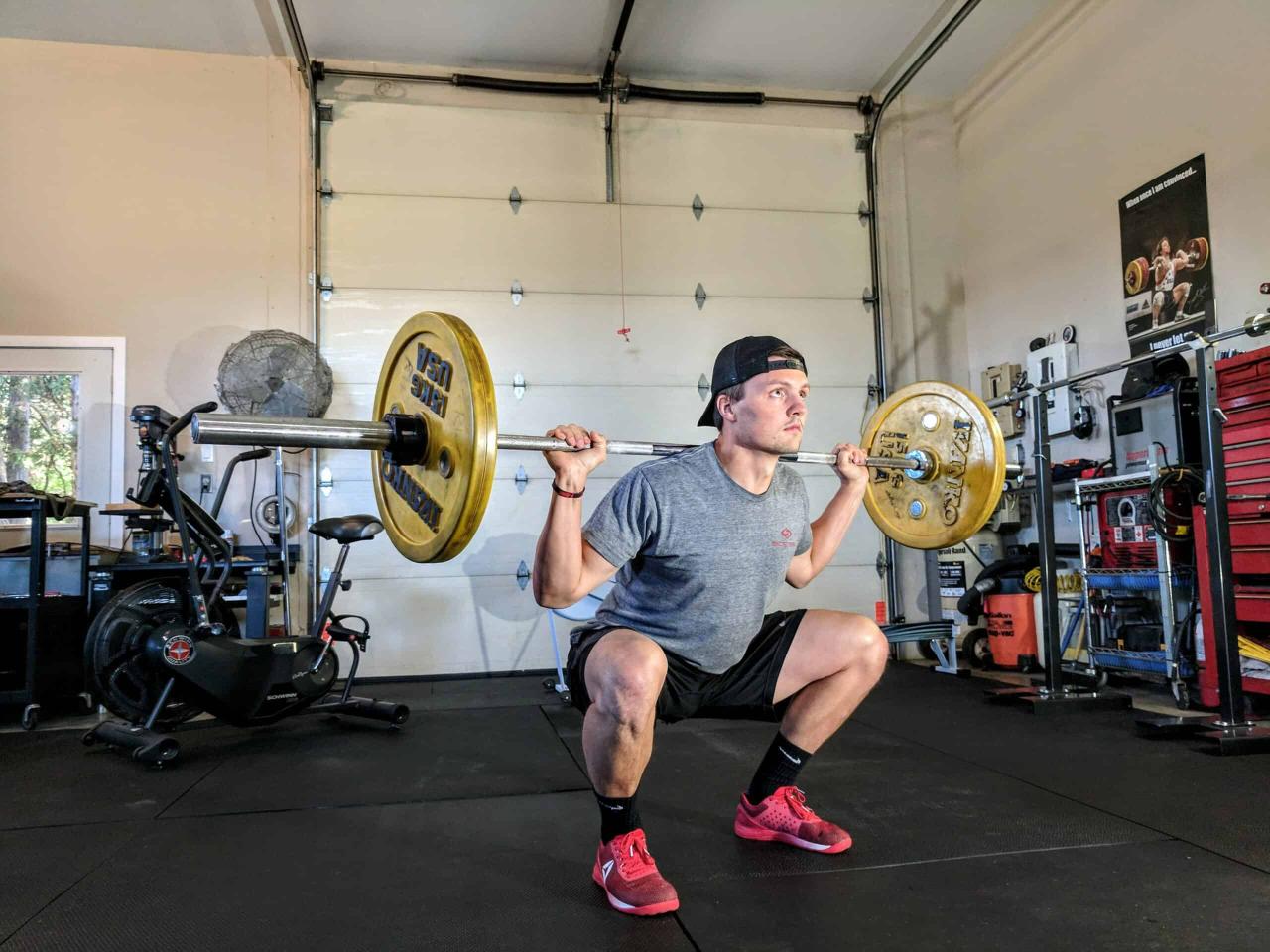
Lifting heavy iron is only half the battle; fueling your body and giving it the downtime it craves is the other, equally crucial half. Think of your muscles as finely tuned sports cars – you can push them hard, but without the right fuel and regular maintenance (read: nutrition and recovery), they’ll sputter and stall. Neglecting this aspect will leave you feeling sluggish, weaker than a kitten in a hurricane, and significantly hindering your progress.Proper nutrition isn’t just about eating enough; it’s about eating the
- right* things, in the
- right* amounts, at the
- right* times. This means strategically loading up on the macronutrients – protein, carbohydrates, and fats – that are essential for muscle growth, repair, and energy.
Protein Intake for Muscle Repair and Growth
Protein is the undisputed king of muscle building. It’s the building block of muscle tissue, providing the amino acids your body needs to repair and rebuild muscle fibers damaged during your workouts. Think of it as the construction crew repairing the roads after a heavy hailstorm. Without sufficient protein, your muscles will struggle to recover, leading to plateaus, reduced strength gains, and potentially even injuries.
Aim for a daily protein intake of around 1.6-2.2 grams per kilogram of body weight, depending on your training intensity and goals. This can be achieved through a variety of sources, including lean meats (chicken, turkey, fish), eggs, dairy products, legumes, and protein supplements if needed. For example, a 70kg individual should consume between 112 and 154 grams of protein daily.
The Role of Sleep and Stress Management in Muscle Recovery
While you’re hitting the weights and crushing your protein goals, remember that your body does most of its muscle repair and growth while you’re asleep. Sleep deprivation is like hitting the snooze button on muscle growth; it significantly hampers your progress. Aim for 7-9 hours of quality sleep per night. Stress, on the other hand, acts as a muscle-growth saboteur, releasing cortisol, a hormone that can interfere with muscle protein synthesis and recovery.
Effective stress management techniques, such as meditation, yoga, or simply spending time in nature, are crucial for optimizing your recovery and maximizing your gains. Imagine your body’s repair system as a finely tuned machine; stress throws a wrench into the works.
Sample Meal Plan for Muscle Building
This sample meal plan provides a balanced intake of macronutrients crucial for muscle building. Remember to adjust portion sizes based on your individual caloric needs and activity levels. This is just a template; feel free to swap out foods for similar options you enjoy.
| Meal | Food | Approximate Macronutrient Breakdown (adjust based on your needs) |
|---|---|---|
| Breakfast | Oatmeal with berries, nuts, and a scoop of whey protein | Protein: 30g, Carbs: 50g, Fat: 15g |
| Lunch | Grilled chicken salad with quinoa and avocado | Protein: 40g, Carbs: 40g, Fat: 20g |
| Dinner | Salmon with brown rice and steamed broccoli | Protein: 35g, Carbs: 50g, Fat: 25g |
| Snacks | Greek yogurt, protein shake, almonds, fruit | Varying based on choice |
Remember, consistency is key. Stick to your nutrition plan and prioritize sleep and stress management for optimal results. Your body will thank you for it!
Progression and Program Adjustment
So, you’ve been diligently following your weightlifting program, feeling stronger and seeing those muscles grow. Fantastic! But the body is a remarkably adaptable creature; it gets used to things. To keep seeing progress, we need to trick it – in a good way, of course. This is where the art of progression and program adjustment comes in.
Think of it as a constant game of one-upmanship with your own muscles.Progressive overload is the name of the game. It’s the cornerstone of any successful strength training program, and it’s essentially about consistently increasing the demands placed on your muscles. This doesn’t necessarily mean always adding more weight; it’s about gradually increasing the stress on your muscles over time.
This can be achieved through various methods, ensuring your muscles are always challenged and forced to adapt, leading to more muscle growth and strength gains.
Methods for Progressive Overload, Effective weightlifting program for building muscle and strength
There are several ways to progressively overload your muscles, and the best approach will depend on your individual goals and training level. Finding the right balance is key to avoid plateaus and injuries.
- Increasing Weight: The most straightforward method. Once you can comfortably perform a set number of repetitions with a given weight, increase the weight slightly for your next workout. This directly challenges your muscles to lift heavier loads.
- Increasing Repetitions: If increasing weight feels too drastic, you can instead increase the number of repetitions you perform for each set while maintaining the same weight. This increases the time under tension, stimulating muscle growth differently.
- Increasing Sets: Similar to increasing repetitions, adding an extra set to your workout increases the total volume, challenging your muscles further. For example, moving from 3 sets of 8 reps to 4 sets of 8 reps.
- Decreasing Rest Time: Reducing the rest time between sets increases the metabolic stress on your muscles, leading to greater fatigue and further muscle growth. This method is particularly effective when combined with other overload techniques.
- Changing Exercises: Incorporating new exercises or variations of existing exercises challenges your muscles in novel ways, preventing adaptation and promoting continued growth. For instance, switching from barbell bench press to incline dumbbell press.
Recognizing and Managing Overtraining
While progressive overload is crucial, it’s equally important to recognize the signs of overtraining. Think of it like this: your body is a finely tuned machine, and pushing it too hard without proper recovery can lead to a breakdown. Ignoring the warning signs can result in injury, illness, and a significant setback in your progress.
- Persistent Muscle Soreness: While some soreness is normal after a workout, persistent, extreme soreness that doesn’t improve with rest is a red flag.
- Decreased Performance: Noticeably weaker lifts, reduced stamina, and inability to hit your target reps are clear indicators that your body needs a break.
- Increased Resting Heart Rate: A consistently elevated resting heart rate can be a sign of overtraining, indicating your body is under significant stress.
- Sleep Disturbances: Difficulty sleeping or consistently poor sleep quality is often linked to overtraining and hormonal imbalances.
- Irritability and Mood Swings: Overtraining can affect your mood, leading to increased irritability, anxiety, and depression.
Managing overtraining involves actively listening to your body and implementing strategies for recovery. This might include reducing training volume, incorporating rest days, prioritizing sleep, and ensuring adequate nutrition. Remember, sometimes less is more.
Adjusting the Weightlifting Program
Your weightlifting program shouldn’t be a static entity; it needs to adapt to your progress and any plateaus you encounter. Think of it as a living document that evolves with your body.
“Consistency is key, but flexibility is crucial.”
Regularly assess your progress. Are you consistently hitting your target reps and sets? Are you making steady progress in terms of weight lifted? If not, it’s time to make adjustments. This might involve tweaking the training variables – sets, reps, rest periods, or exercise selection – or even taking a deload week to allow your body to recover fully before resuming your training.
A deload week typically involves significantly reducing training volume and intensity. For example, reducing the weight by 40-50% and the number of sets by 50%. Think of it as a strategic retreat to regroup and prepare for the next assault on your fitness goals. Remember, progress isn’t always linear; plateaus are a normal part of the process, and smart adjustments are key to overcoming them.
Safety Considerations and Injury Prevention
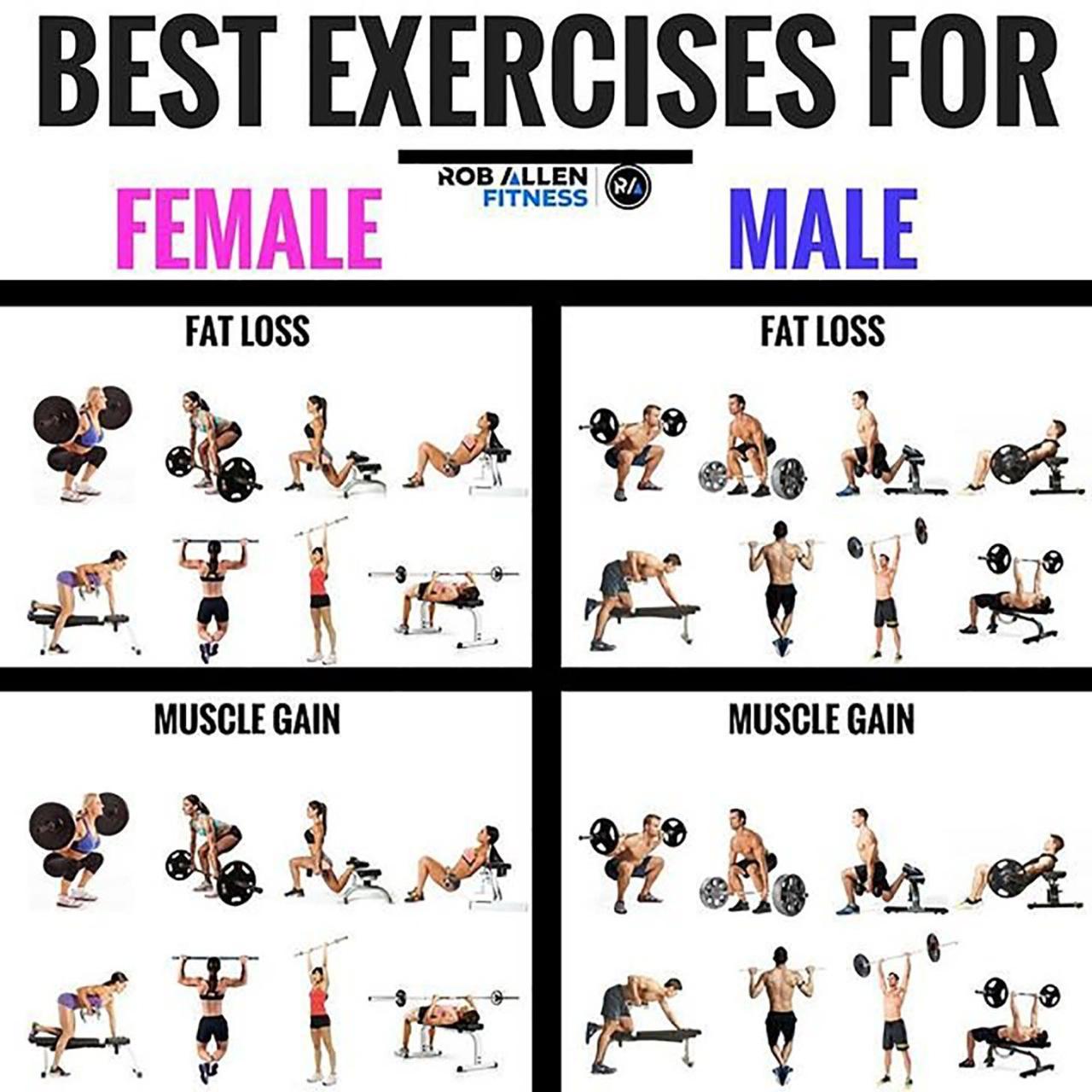
Weightlifting, while incredibly rewarding for building muscle and strength, carries inherent risks. Ignoring safety can turn your gains into pains, quite literally. This section will cover crucial safety guidelines to help you lift smarter, not harder, and keep those gains coming without the unwelcome side effects of injury. Remember, prevention is always better (and cheaper!) than cure.Proper warm-up and cool-down routines are essential components of any effective weightlifting program.
Neglecting these steps is like trying to run a marathon without stretching – a recipe for disaster. A proper warm-up prepares your body for the stresses of lifting, increasing blood flow to muscles and improving joint mobility. A cool-down helps your body recover and reduces muscle soreness.
Warm-up and Cool-down Routines
A good warm-up should include light cardio, such as 5-10 minutes of jogging or jumping jacks, followed by dynamic stretches like arm circles, leg swings, and torso twists. These stretches increase range of motion and prepare your muscles for the workout ahead. Avoid static stretches (holding a stretch for an extended period) before lifting, as they can actually weaken muscles.
After your workout, a cool-down should include static stretches, holding each stretch for 20-30 seconds. This helps improve flexibility and reduce muscle soreness. Think of it as giving your muscles a soothing massage after a hard day’s work.
Common Weightlifting Injuries and Prevention Strategies
Common weightlifting injuries include muscle strains, sprains, and tears, often stemming from improper form, lifting too heavy, or neglecting rest and recovery. Back injuries are particularly prevalent, often caused by poor lifting technique. Knee injuries can result from improper squatting or lunging form. Shoulder injuries are common in overhead presses and bench presses. Prevention strategies include focusing on proper form, gradually increasing weight, and prioritizing rest and recovery.
Always listen to your body; pain is a signal to stop, not push through. Using a spotter for heavier lifts can provide an extra layer of safety.
Injury Substitution Exercises
If an injury occurs, substituting exercises can help maintain your training momentum while allowing the injured area to heal. The key is to find exercises that target similar muscle groups without aggravating the injury. Remember to consult with a physician or physical therapist before modifying your workout routine.
- If you injure your lower back: Instead of squats, try glute bridges or hamstring curls. These exercises still work your legs and glutes without stressing your lower back.
- If you injure your shoulder: Replace overhead presses with dumbbell bench presses or chest flyes. These target similar muscles but avoid overhead movement.
- If you injure your knee: Substitute squats with leg presses or seated leg extensions. These exercises work the quadriceps and hamstrings without putting direct stress on the knee joint.
- If you injure your wrist: Switch from barbell rows to dumbbell rows or cable rows, allowing for a more neutral wrist position.
Remember, weightlifting should be a journey of progress and improvement, not a race to the emergency room. Prioritize safety, listen to your body, and enjoy the process!
Final Summary
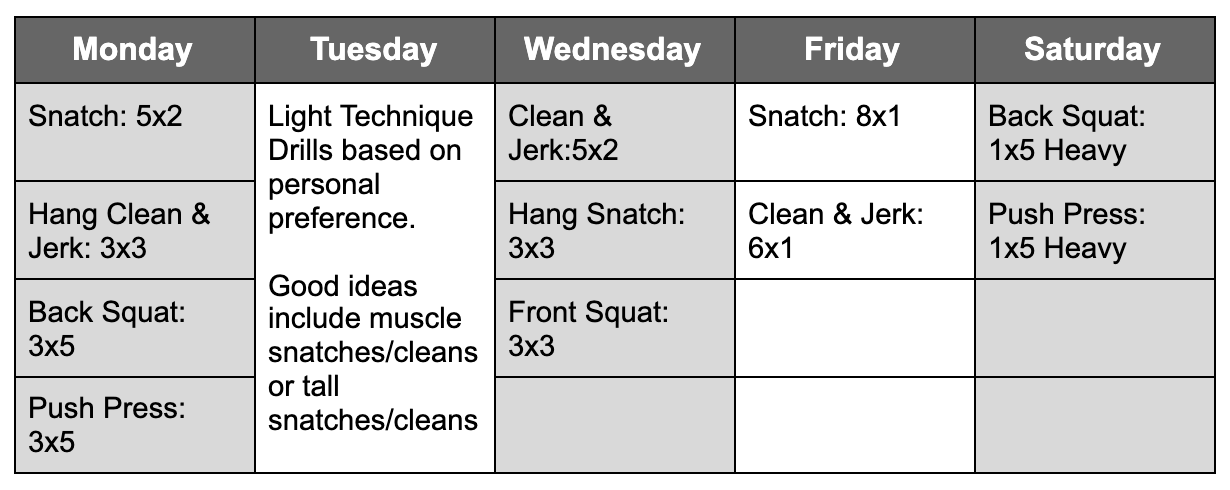
So, there you have it – your blueprint to a stronger, more muscular you. Remember, consistency is key. Don’t expect miracles overnight (unless you’re secretly a Kryptonian), but with dedication to this program, proper nutrition, and a healthy dose of self-belief, you’ll be amazed by the transformation you achieve. Now go forth, and conquer those weights! And maybe treat yourself to a protein shake afterwards.
You deserve it.
